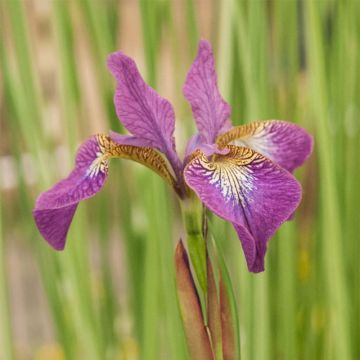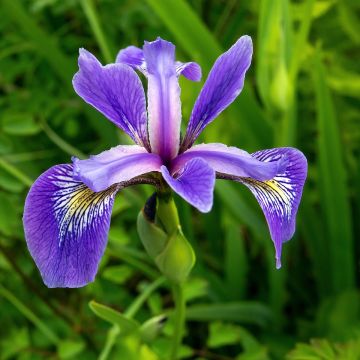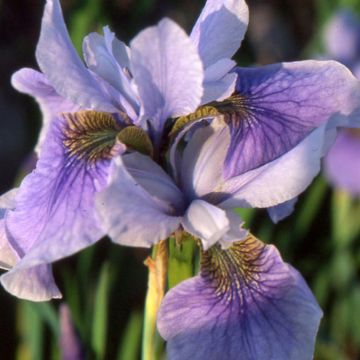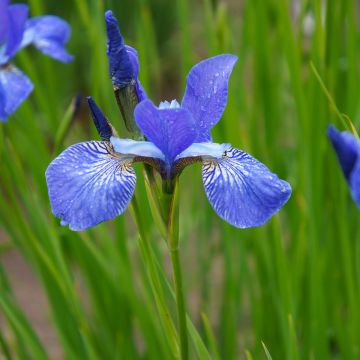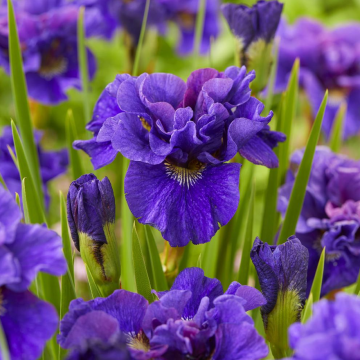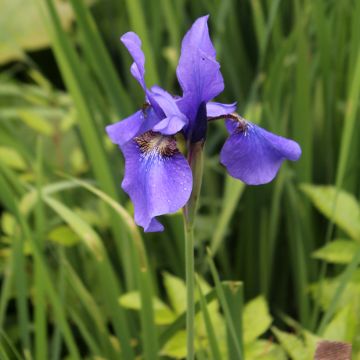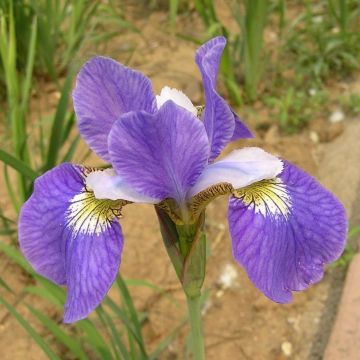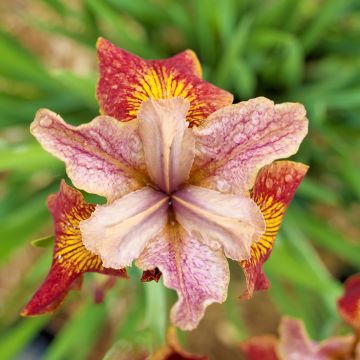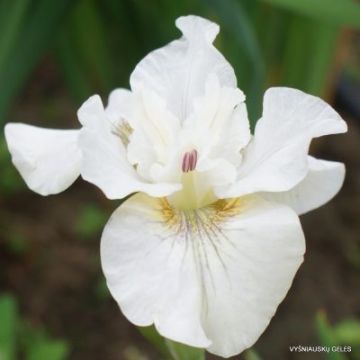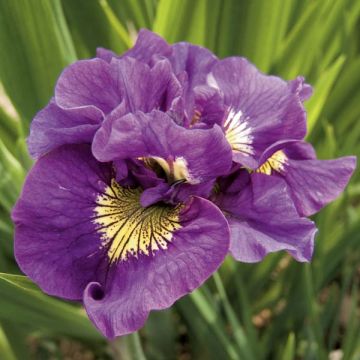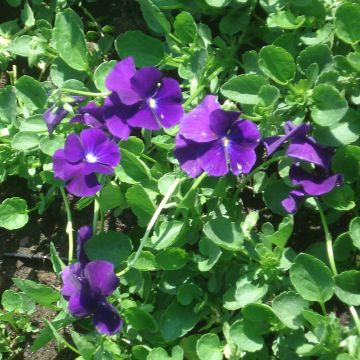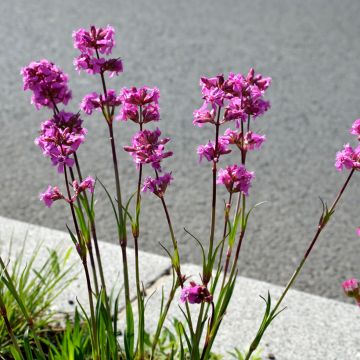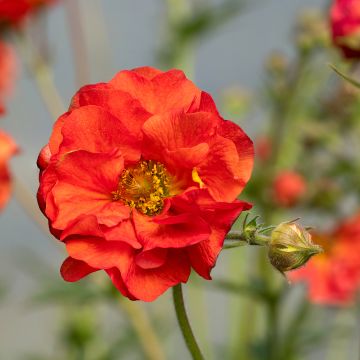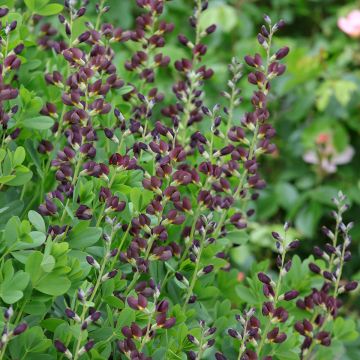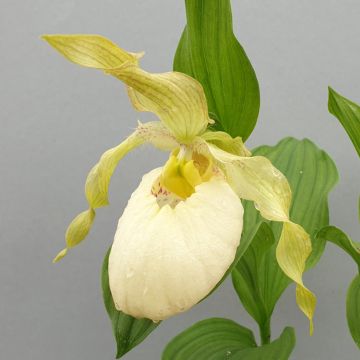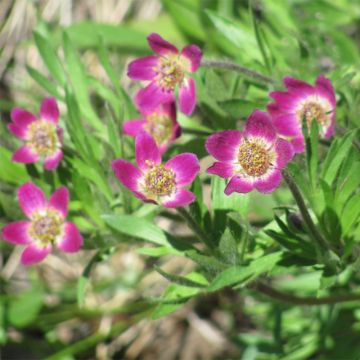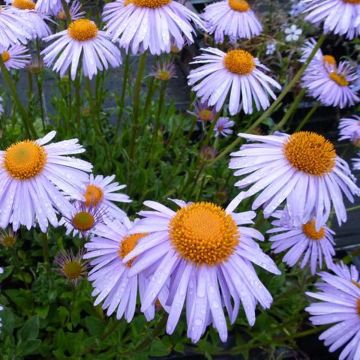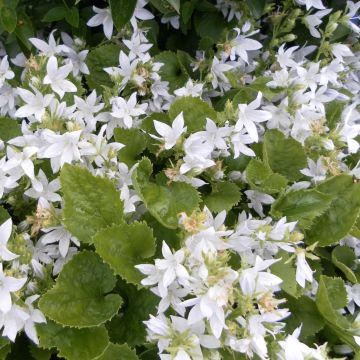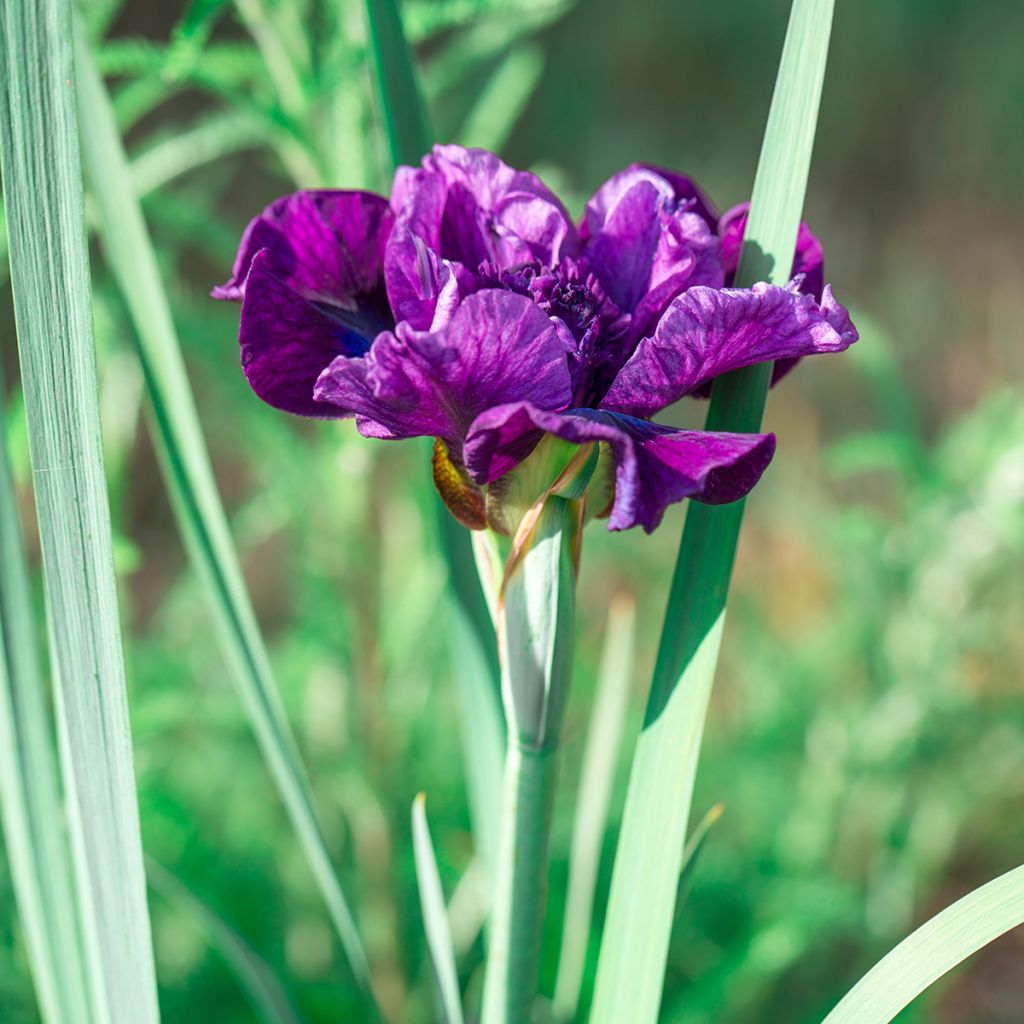

Iris sibirica Bundle of Joy - Siberian Iris
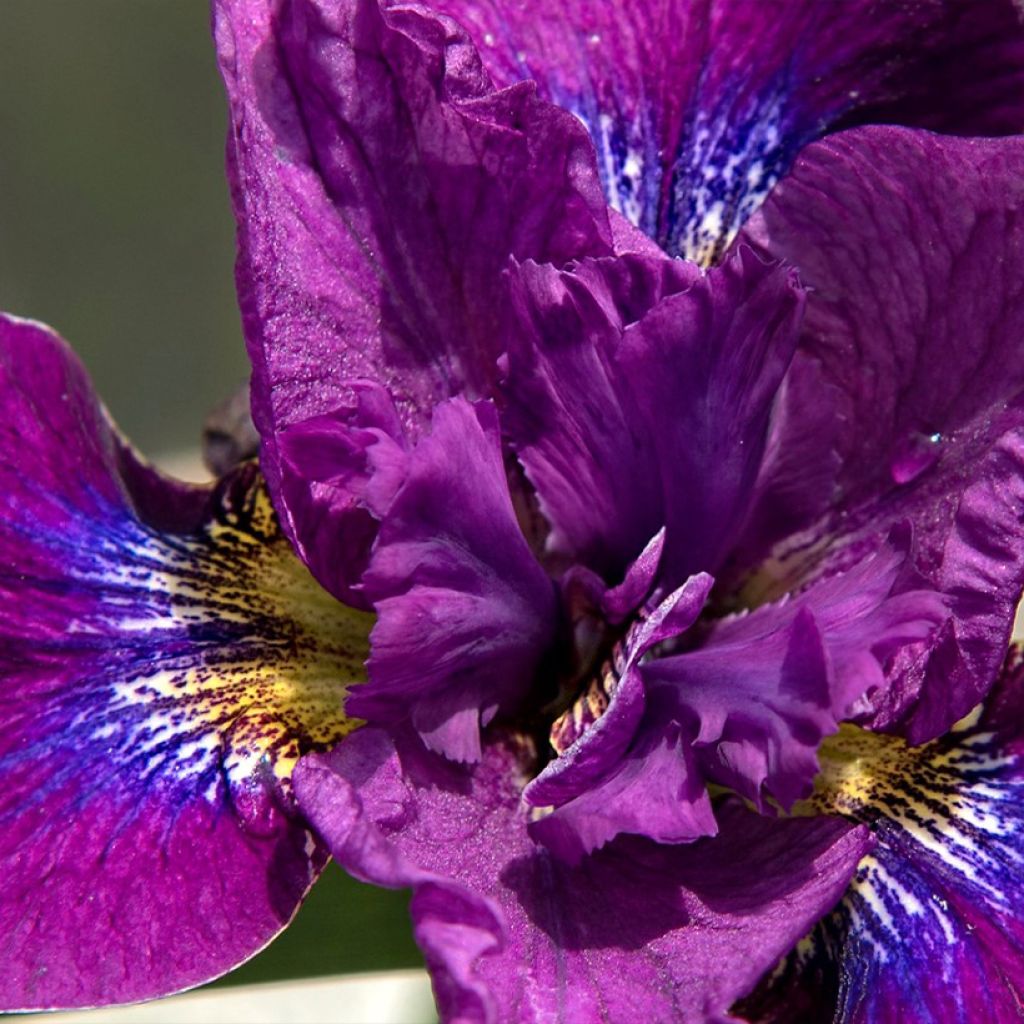

Iris sibirica Bundle of Joy - Siberian Iris
Iris sibirica Bundle of Joy - Siberian Iris
Iris sibirica Bundle of Joy
Siberian Iris, Siberian Flag
This item cannot be shipped to the selected country
Delivery charge from €5.90
More information
Schedule delivery date,
and select date in basket
This plant carries a 12 months recovery warranty
More information
We guarantee the quality of our plants for a full growing cycle, and will replace at our expense any plant that fails to recover under normal climatic and planting conditions.
From €5.90 for pickup delivery and €6.90 for home delivery
Express home delivery from €8.90.
Does this plant fit my garden?
Set up your Plantfit profile →
Description
Iris sibirica 'Bundle of Joy' is a mid-season Siberian iris that stands out with its double flowers, in tight cups, filled with petals. The flowers bear a pretty purplish tone. They bloom in spring, carried by tall stems that dominate a beautiful clump of leaves. Appreciated for their graceful flowers and striking foliage, the so-called Siberian irises are vigorous and beautiful plants for wet soils, unlike their cousins the German irises. They are also very hardy and adaptable irises, which will thrive in good garden soil that remains moist in summer. Ideal near water features, as long as the roots are not submerged in winter, they are perfect for romantic, English, Japanese, and even contemporary gardens.
'Bundle of Joy' is a horticultural selection by Bob Bauer and John Coble, registered in 2000. It is a rhizomatous and deciduous perennial plant, with an upright clumping habit from spring onwards. It belongs to the Iridaceae family. It is one of the many cultivars obtained from Iris sibirica, native to central and eastern Europe and Turkey (but absent from Siberia), and I. sanguinea found in China, Siberia, Japan, Manchuria, and Korea. This 'Bundle of Joy' iris will reach about 60 to 65cm (24 to 26in) in height when in bloom, 45 to 50cm (18 to 20in) in height for the foliage, and the clump will spread about 50cm (20in). Its growth rate is average, slower than that of German irises. This plant has an upright, elegant habit with dense clumps. The foliage consists of long, narrow leaves of a slightly greyish-green colour. Between early May and early June, depending on the region, the flower stems project above the foliage with multiple-petalled flowers, numbering between 6 and 9. Their colour is a pinkish violet, and they are arranged in a tight cup shape. Beneath these petals, there are 3 large sepals of a darker wine-red colour. They have a velvety texture, are strongly flared, and appear almost horizontal. The flowers open successively from the tip of the stem towards the lower branches. This iris propagates through rhizomes, with vegetation disappearing in winter.
'Bundle of Joy' is perfect near a water feature or a stream, or simply in very moist soil. It is also suitable for any type of garden that never dries out. Its elegance is perfectly suited to romantic gardens, English gardens, and other mixed borders. In wet soil, it can be planted with many perennials that thrive in the same conditions: camassias, poet's narcissus, montbretias, daylilies, and astilbes.
Note: The wild Siberian iris L. is an endangered and protected species that must be absolutely respected. Horticultural Siberian irises are obtained through the hybridisation of different species from the Sibericae series (I. sanguinea, etc.). Their flowers are larger than those of the wild forms and come in various colours. Several hundred named cultivars are registered.
Report an error about the product description
Iris sibirica Bundle of Joy - Siberian Iris in pictures
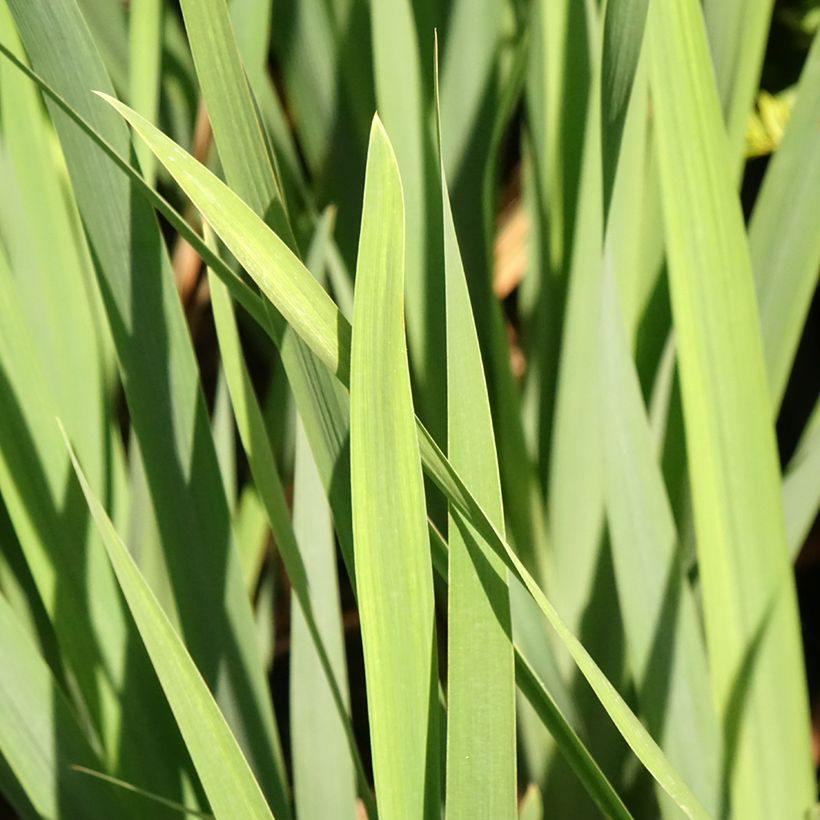

Flowering
Foliage
Plant habit
Botanical data
Iris
sibirica
Bundle of Joy
Iridaceae
Siberian Iris, Siberian Flag
Cultivar or hybrid
Other Siberian Iris
Planting and care
'Bundle of Joy' tolerates a wet situation, such as on a bank, as long as it is not permanently submerged. It can also be grown in ordinary garden soil, with mulching and watering every 15 days in summer. It prefers rich, well-drained, acidic to neutral (pH 4.5 to 8) soil. Soil that is too clayey, too chalky or too sandy can be improved by adding a good amount of humus (well-decomposed compost). Alkaline soil can be slightly acidified by adding ericaceous soil or turf, pine needles, or sulphur flower.
Siberian irises need a sunny location to flower, with at least 6 hours of daily sunlight. In the hottest regions, light shading during hot hours may be beneficial. It is best to plant during the dormant period, from late September to mid-April, outside of freezing periods. In hot climates, planting can be done in September. In regions with cold winters, planting should be done at the beginning of vegetation, in late March or April. (They will only flower the following year). Planting in August can be an alternative.
Plant Siberian iris rhizomes at a depth of 3 to 5cm (1 to 2in). Siberian irises can remain in place without division for longer than bearded irises. They should only be divided every 5 to 10 years, when the clump no longer flowers in the centre or forms a crown. Allow space for the clump to develop. Fertilise with an NPK 10-10-10 type fertiliser at the start of vegetation and after flowering in June. On young clumps, systematically cut off the faded flower stems to prevent exhaustion. On well-established clumps, remove the stems to prevent spontaneous seedlings of non-true-to-type seedlings.
After autumn frosts, yellowed foliage can be cut back to 3 to 5cm (1 to 2in) from the ground (and left in place as mulch). This dry foliage can alternatively be left during winter as an "architectural" element in the garden. It is then only cut back at the end of winter, in late February, before the new leaves start to grow.
Planting period
Intended location
Care
This item has not been reviewed yet - be the first to leave a review about it.
Spring flowering perennials
Haven't found what you were looking for?
Hardiness is the lowest winter temperature a plant can endure without suffering serious damage or even dying. However, hardiness is affected by location (a sheltered area, such as a patio), protection (winter cover) and soil type (hardiness is improved by well-drained soil).

Photo Sharing Terms & Conditions
In order to encourage gardeners to interact and share their experiences, Promesse de fleurs offers various media enabling content to be uploaded onto its Site - in particular via the ‘Photo sharing’ module.
The User agrees to refrain from:
- Posting any content that is illegal, prejudicial, insulting, racist, inciteful to hatred, revisionist, contrary to public decency, that infringes on privacy or on the privacy rights of third parties, in particular the publicity rights of persons and goods, intellectual property rights, or the right to privacy.
- Submitting content on behalf of a third party;
- Impersonate the identity of a third party and/or publish any personal information about a third party;
In general, the User undertakes to refrain from any unethical behaviour.
All Content (in particular text, comments, files, images, photos, videos, creative works, etc.), which may be subject to property or intellectual property rights, image or other private rights, shall remain the property of the User, subject to the limited rights granted by the terms of the licence granted by Promesse de fleurs as stated below. Users are at liberty to publish or not to publish such Content on the Site, notably via the ‘Photo Sharing’ facility, and accept that this Content shall be made public and freely accessible, notably on the Internet.
Users further acknowledge, undertake to have ,and guarantee that they hold all necessary rights and permissions to publish such material on the Site, in particular with regard to the legislation in force pertaining to any privacy, property, intellectual property, image, or contractual rights, or rights of any other nature. By publishing such Content on the Site, Users acknowledge accepting full liability as publishers of the Content within the meaning of the law, and grant Promesse de fleurs, free of charge, an inclusive, worldwide licence for the said Content for the entire duration of its publication, including all reproduction, representation, up/downloading, displaying, performing, transmission, and storage rights.
Users also grant permission for their name to be linked to the Content and accept that this link may not always be made available.
By engaging in posting material, Users consent to their Content becoming automatically accessible on the Internet, in particular on other sites and/or blogs and/or web pages of the Promesse de fleurs site, including in particular social pages and the Promesse de fleurs catalogue.
Users may secure the removal of entrusted content free of charge by issuing a simple request via our contact form.
The flowering period indicated on our website applies to countries and regions located in USDA zone 8 (France, the United Kingdom, Ireland, the Netherlands, etc.)
It will vary according to where you live:
- In zones 9 to 10 (Italy, Spain, Greece, etc.), flowering will occur about 2 to 4 weeks earlier.
- In zones 6 to 7 (Germany, Poland, Slovenia, and lower mountainous regions), flowering will be delayed by 2 to 3 weeks.
- In zone 5 (Central Europe, Scandinavia), blooming will be delayed by 3 to 5 weeks.
In temperate climates, pruning of spring-flowering shrubs (forsythia, spireas, etc.) should be done just after flowering.
Pruning of summer-flowering shrubs (Indian Lilac, Perovskia, etc.) can be done in winter or spring.
In cold regions as well as with frost-sensitive plants, avoid pruning too early when severe frosts may still occur.
The planting period indicated on our website applies to countries and regions located in USDA zone 8 (France, United Kingdom, Ireland, Netherlands).
It will vary according to where you live:
- In Mediterranean zones (Marseille, Madrid, Milan, etc.), autumn and winter are the best planting periods.
- In continental zones (Strasbourg, Munich, Vienna, etc.), delay planting by 2 to 3 weeks in spring and bring it forward by 2 to 4 weeks in autumn.
- In mountainous regions (the Alps, Pyrenees, Carpathians, etc.), it is best to plant in late spring (May-June) or late summer (August-September).
The harvesting period indicated on our website applies to countries and regions in USDA zone 8 (France, England, Ireland, the Netherlands).
In colder areas (Scandinavia, Poland, Austria...) fruit and vegetable harvests are likely to be delayed by 3-4 weeks.
In warmer areas (Italy, Spain, Greece, etc.), harvesting will probably take place earlier, depending on weather conditions.
The sowing periods indicated on our website apply to countries and regions within USDA Zone 8 (France, UK, Ireland, Netherlands).
In colder areas (Scandinavia, Poland, Austria...), delay any outdoor sowing by 3-4 weeks, or sow under glass.
In warmer climes (Italy, Spain, Greece, etc.), bring outdoor sowing forward by a few weeks.

































